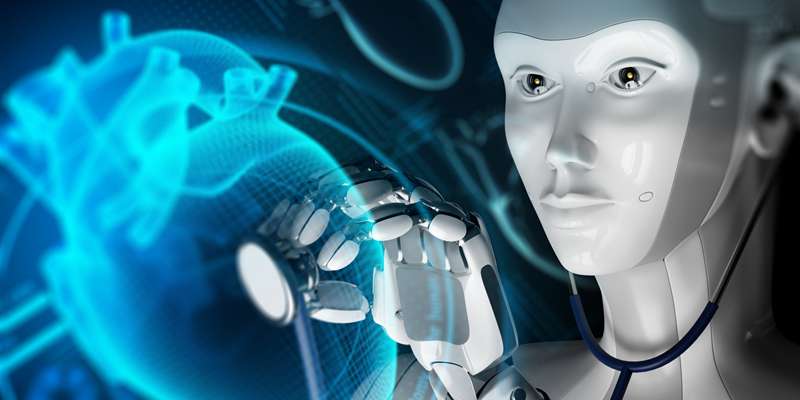- December 9, 2022
Robots and artificial intelligence have become part of people’s everyday lives nowadays. Among them, the medical industry is one of the industries where the two are critical. Here, medical robots have helped in several ways to make medical operations more efficient and effective.
Medical robotics is made of AI designed into a body made from different materials, e.g., metals, plastics, and composite materials. This article discusses medical robots’ use and how machining technologies are helping manufacture medical robot parts.
What are Medical Robots?
Medical robots come with a special design that makes them applicable in the medical field. They are mostly controllable remotely and suitable for performing surgical treatment procedures and medicines distribution, among other functions.
Every robot (medical or non-medical) comprises some technical features, and they include:
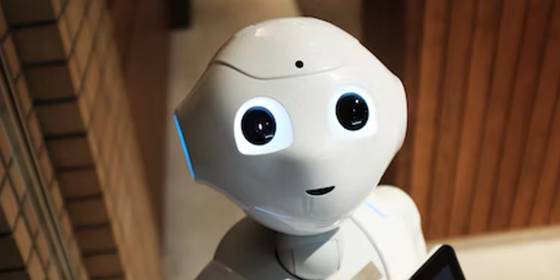
1. Controller
The controller is the brain or processing unit embedded in a medical robot. It is unique to every robot and is primarily a small, inserted computer system where all the robots’ programs run.
2. Power Supply
The robot’s power supply can be an internal battery or a fixed external power source. The type of power supply dictates the robot’s dexterity in performance and movement. For example, robots with internal batteries are more flexible in movement, unlike those with a fixed power source.
3. Programming
Programming is a set of instructions that dictates what the robot does. The programming with the controller helps the medical robots to adhere properly to instructions and avoid inefficiencies and errors.
4. Sensors
Sensors come in various shapes, sizes, and functions in detecting the surroundings.
5. End Effectors
The end effector allows the robot to interact with its surroundings and work.
Benefits of Medical Robotics in the Healthcare Industry
Medical robots are highly beneficial to healthcare due to several reasons. Below are a few benefits:
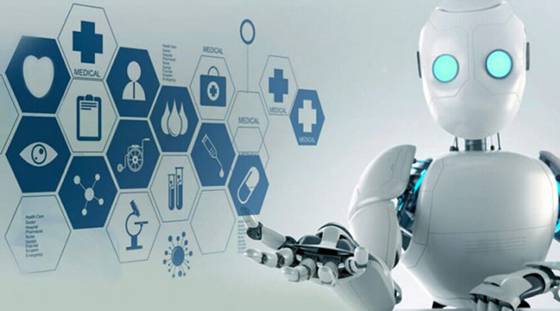
Shared Medical Work
Robots in the medical field execute standard streams of work independently, which decreases the workload on health staff. They also ensure consistency and solve the problem of a shortage of health workers.
For example, medical robots can use sanitizers and disinfectants to clean hospital rooms. As a result, medical practitioners can concentrate on caring for patients and other important tasks.
Increase in Workplace Safety
Any medical facility has a fair share of unhealthy microorganisms, and medical personnel is susceptible to them. Medical robotics is applicable in controlled and systematic cleaning, which can help decrease the circulation of pathogens and prevent doctors from contracting a health center’s infections.
Also, specially designed medical robots can help healthcare workers with strenuous jobs like moving patients, beds, or machines.
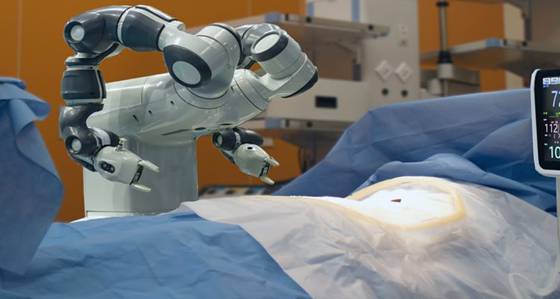
Assistance with Surgery
Some medical robots are sophisticated enough to assist surgeons during a surgical process. A common example is the use of robotics in heart surgery. These medical robots are applicable because they can perform highly precise surgical operations without errors. As a result, this will increase the success rates of surgical performances.
Types of Medical Robots
There are various types of medical robots, but the most common types include the following:
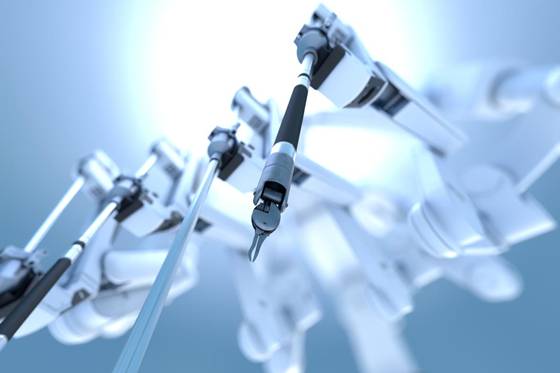
1. Surgical Robots
This type of medical surgical robot ensures that surgical procedures are precise and efficient. Depending on the sophistication, they can carry out remote surgical operations in areas where human surgical doctors are not physically present.
2. Robotics for Radiotherapy
These medical robots help set the beam’s source, place the patient remotely without assistance, and arrange imaging systems. Additionally, radiotherapy robots can treat tumors in various locations of the body.
3. Rehabilitation Robots
These medical robots help and assist older people or patients that have disabilities with movements. They are applicable in rehabilitation services such as therapeutic exercises and training and can monitor the patient’s progress with careful
assessments.
4. Laboratory Robots
These medical robots’ examples assist lab technicians in moving biological or chemical substances that can be harmful. Furthermore, they are suitable for examining test tubes with high speeds and accuracy, and as a result, this decreases the normal errors humans make.
5. Robotic Prosthetics
They help restore balance to a patient with a lost limb by providing them with a lifelike limb. Unlike conventional prosthetic limbs, robotic prosthetics exhibit certain sophisticated functions.
For example, they can be remote-controlled. Additionally, AI-robotic prosthetics can learn over time and are ergonomic.
6. Hospital Robots
Hospital medical robots help healthcare workers by relieving them of some responsibilities. They’ve been programmed to know their surroundings well and can perform tasks like making food deliveries, medicines, and samples around the hospital.
Common Medical Robot Part Manufacturing Methods
Manufacturing medical robots come with an understanding of the need for a part manufacturing process with tight tolerance and high precision and accuracy. This is because medical robots deal with human life, and a small mistake could lead to more complications or even death.
Common manufacturing processes for producing medical robots include the following:
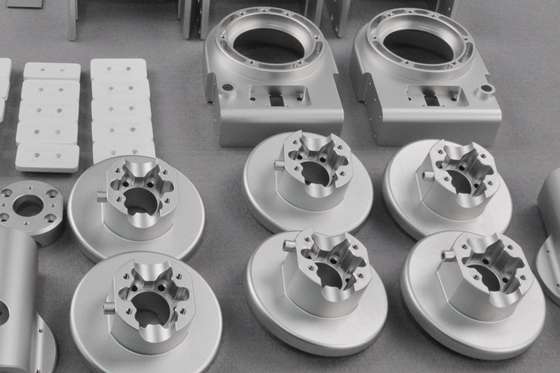
Precision CNC Machining
CNC (Computer Numerical Control) machining is the best option when manufacturing medical robots accurately with low tolerance. It is a computer-controlled subtractive manufacturing process that relies on CAD software to create parts. The process applies to making medical robot parts like screws, sensors, end effectors, etc.
Benefits of Precision CNC machining
Precision CNC machining is highly applicable in medical robot manufacturing due to the following benefits.
Fast Production Processes
CNC machining operations such as CNC turning and milling are very fast. With the process, it is possible to make parts of a medical robot fast without reducing accuracy, whether singly or in low-volume production.
Complex Shapes and Tight Tolerance
CNC machining is highly applicable in making complex shapes with tight tolerance. Most medical robot components have complex designs to actualize their functions. As a result, they need a precision-based process to achieve such requirements.
Medical machining is highly applicable in making complex shapes with tight tolerance. The process’s efficiency and effectiveness depend on the machine used, with 5-axis CNC machines being the best for such situations.
Versatility
CNC machining is compatible with all the materials used in making medical robot parts. These include plastics, steel, aluminum, titanium, and other composite materials.
Overmolding and Insert Molding
These are injection molding processes suitable for making parts that comprise two materials (different or the same).
Overmolding is a two-step manufacturing process that involves making a part using two plastic materials that can be the same or different. The operator makes the first part inside an injection mold and then positions the resulting product in another. Afterward, the operator molds the second part resulting in a single product from two injection molding steps.
Insert molding is similar to overmolding. However, the plastic is molded on a non-plastic material (most times, a metal) called the insert. It is a very suitable method for manufacturing fasteners used in medical robots.
Benefits of Overmolding and Insert Molding
Overmolding and insert molding are suitable for making plastic and plastic/metal medical robotics parts due to their immense benefits.
Cost-effective
Overmolding and insert molding processes are very cost-effective, especially for high-volume production.
Durability
Parts manufactured with these processes are extremely strong and durable. As a result, they can withstand severe conditions.
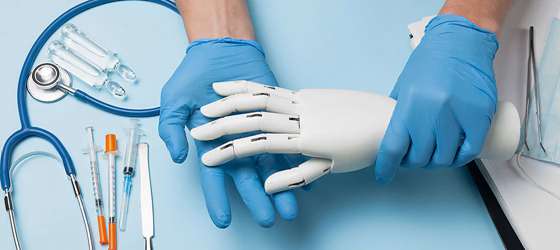
3D Printing
3D printing is an additive manufacturing process that uses 3D printers to produce strong and three-dimensional parts from a CAD model. It is the most common manufacturing method in medical part manufacturing and applies to manufacturing robot parts such as robotic prosthetics.
Benefits of 3D Printing
Below are a few benefits of 3D printing in medical part manufacturing:
Rapid Prototyping
3D printing is a fast, cheap, and reliable manufacturing and prototyping method. Using the process, you can create prototypes in hours.
Flexibility
3D printing allows the creation of flexible and complex 3D designs quickly. As a result, it provides swift solutions for parts of medical robots that wear over time.
How To Choose the Right Process for Medical Robot Parts?
Selecting the best medical machining process is very important, and there are some factors you need to consider before choosing a machining process for medical robots. These considerations include:
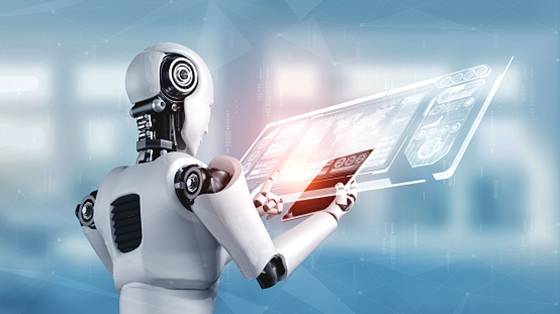
Prototyping vs. Real-time Manufacturing
Prototype manufacturing involves making parts in small quantities for testing, and it occurs in the early manufacturing stages and is most time achievable using 3D printing and CNC machining. For real-time manufacturing, use injection molding or low volume CNC machining process.
Accuracy and Tolerance
Parts assembled to make medical robots should be highly accurate and precise. Hence, the need for manufacturing processes with tight tolerances to eliminate errors. In terms of accuracy, all the processes highlighted above are suitable. However, automation places CNC machining processes above others.
Suitability for Complex Designs
Robotic parts have complex designs. As a result, you need a manufacturing process compatible with complex designs. Here, 3D printing and CNC machining are the most appropriate methods. In general, 5-axis CNC machines are the most suitable for making complex robotic parts due to their ability to rotate and move along several axes to produce the final design
Future Trends of Robotics in the Medical Field
Predicting the future of robotics in the medical field is difficult due to different adoptions, technological advancements, etc. However, some of the following trends have high-visibility outcomes:
1. Improved Human Touch
Using man-made skin will give humanoid medical robots a better sense of touch. Furthermore, it will allow such robots to give special care to patients due to the ability to sense environmental pressure. This trend is on its way to accomplishing the goal of giving robots an improved sense of feeling things through touch.
2. Better Robotic Performance in Surgeries
Robotic technologies are transforming the surgical area of medicine as they assist surgeons in complex movements during surgeries. It increases precision, control, and flexibility during surgical operations.
As a result, surgeons can perform complex surgical procedures with fewer difficulties. Robots can help in picking up medical equipment and actual surgery.
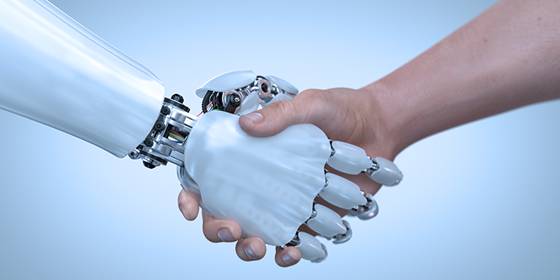
3. Increasing the Empathy for Robots
Before the recent development in AI, the term empathy does not apply to a robot. As a result, robots are only programmed to perform simple and direct operations. However, with the introduction of empathy into some highly sophisticated robots, there is better interaction between patients, medical personnel, and robots.
Increasing the empathy of robots works differently for each group. For example, with robots and workers, information is easier to disseminate and request. Regarding robots and patients, AI incorporation helps ensure patients feel like they are talking to human beings. As a result, there can be a reduction in the level of depression and loneliness.
4. Tele-nursing
Tele-nursing involves a human nurse operating a robot to deliver patient care services. Some components like AR, sensors, robot manipulation, teleconferencing, etc., help to develop telenursing.
WayKen's Medical Prototyping and Machining Services for Your Robot Projects
The machining of medical robots requires high precision, good quality, and accuracy. At WayKen, we have long-term experience providing medical prototyping and machining solutions in the medical field.
As an ISO-certified rapid manufacturing company, we specialize in a variety of machining techniques, including precision milling, turning, wire EDM, 3D printing, rapid injection molding, etc. In addition, we have a 100% part inspection, so you can be assured of getting high-standard parts. Simply upload your CAD files and get a quote and DFM feedback today!
Conclusion
Nowadays, robot technology has diverse uses in the medical sector, directly or indirectly impacting patients’ lives. However, this article has extensively explained how medical robots are altering and developing the medical field and the manufacturing processes involved in creating them.
FAQs
Can medical robots commit errors?
Compared to surgeries performed by doctors, the chances of a medical robot making a mistake are very low because of its accurate calculations and the smooth movement of its arms.
How safe is using a medical robot during surgical operations?
Most surgical operations have a normal risk associated with them, but robotic surgeries are known to be very safe.
Which is the best manufacturing process for producing medical robots?
Medical robots comprise many parts and are susceptible to different manufacturing methods, such as CNC machining, 3D printing, and injection molding. The choice of manufacturing process depends on your budget, design, volume to be produced, etc.

